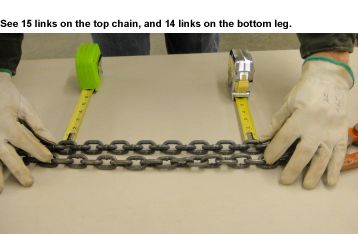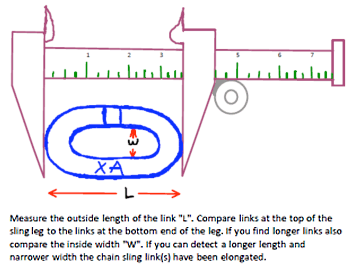Driving by many construction sites, you’ll often notice one or two sets of chain slings hanging off the hook of the site’s utility mobile crane used for off-loading materials. These tough and durable slings are the rigger’s favorite tool, just like the crane is to its operator.
A client called and asked about quick inspection tips to determine if chain slings had been subjected to overload. Without tools, we suggested two quick comparisons.
My friend Jim Amick of Amick & Associates showed me a trick a few years ago that works very well. Grab a section of chain and pull, and then rotate right hand forward and left hand backward. Reverse directions. The chain should rotate easily. If it only rotates less than ¼ turn, then it is a good bet that the chain links have collapsed from overload and they are binding, which resists the rotation.
 Another quick evaluation is to lay the lower leg portion adjacent to the upper. Match chain link welds and compare about 1’ of the runs of chain. If the welds don’t continue to match there is likely elongation, but this condition could also be as a result of inner link wear. Check the link-to-link contact points.
Another quick evaluation is to lay the lower leg portion adjacent to the upper. Match chain link welds and compare about 1’ of the runs of chain. If the welds don’t continue to match there is likely elongation, but this condition could also be as a result of inner link wear. Check the link-to-link contact points.
With calipers, also check random links to see if you can detect elongation. The most effective measurements are the outside length and inside width of various links.
Well, there are about a dozen other items to check when inspecting a chain sling, but I thought I would share a few tricks, learned over the years. Just trying to take care of the crane’s little buddy (the slings) and my rigging friends (you).
Happy trails,
Mike Parnell
ITI-Field Services
P.S. Visit Industrial Training International to learn how to become a qualified, in-house rigging gear inspector through the original Rigging Gear Inspector Training program.


COMMENTS